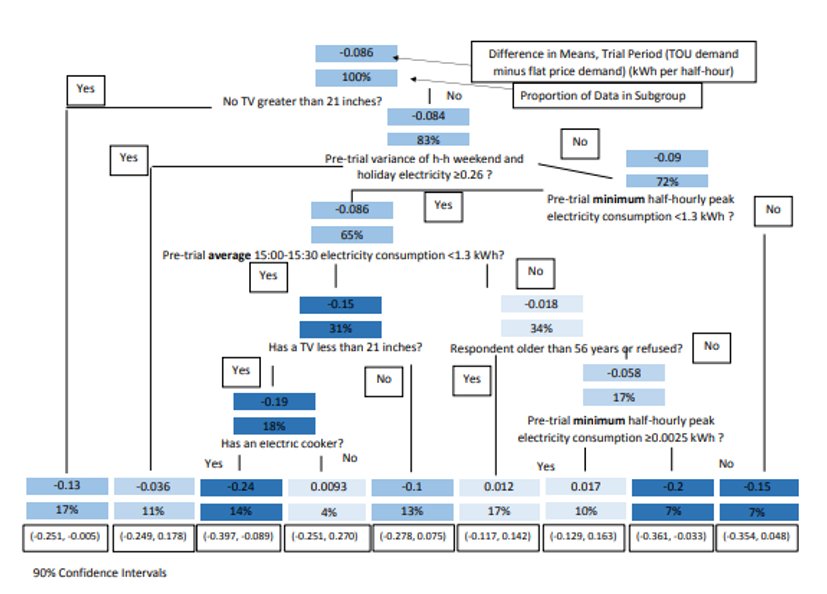CAMBRIDGE, 23 Oct 2018
Authors: Eoghan O’Neill (Faculty of Economics, University of Cambridge, UK), Melvyn Weeks (Faculty of Economics and Clare College, University of Cambridge, UK)
Full publication: Link
We examine the distributional effects of the introduction of Time-of-Use (TOU) pricing schemes where the price per kWh of electricity usage depends on the time of consumption. These pricing schemes are enabled by smart meters, which can regularly (i.e. half-hourly) record consumption. Using causal trees, and an aggregation of causal tree estimates known as a causal forest (Athey & Imbens 2016, Wager & Athey 2017), we consider the association between the effect of TOU pricing schemes on household electricity demand and a range of variables that are observable before the introduction of the new pricing schemes. Causal trees provide an interpretable description of heterogeneity, while causal forests can be used to obtain individual-specific estimates of treatment effects.
Given that policy makers are often interested in the factors underlying a given prediction, it is desirable to gain some insight to which variables in this large set are most often selected. A key challenge follows from that fact that partitions generated by tree-based methods are sensitive to subsampling, while the use of ensemble methods such as causal forests produce more stable, but less interpretable estimates. To address this problem we utilise variable importance measures to consider which variables are chosen most often by the causal forest algorithm. Given that a number of standard variable importance measures can be biased towards continuous variables, we address this issue by including permutation-based tests for our variable importance results.

